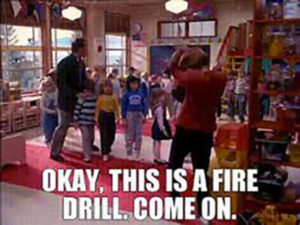If you’re like most dealerships, you’re not in the business of environmental health and safety regulation. You’re focused on selling and servicing vehicles. But that’s exactly why establishing a dedicated safety team is so crucial – it ensures someone is specifically accountable for keeping your employees safe and your business compliant.

Key Roles Your Safety Team Needs
Let me break down the essential roles you’ll need on your safety team – and trust me, after 17 years in EHS, I’ve seen how critical each one is to keeping a dealership running safely and smoothly.
The direct and indirect costs of a workplace injury or illness can have a significant impact on a dealer's bottom line. Download this guide and save your dealership millions.
The Benefits of an Effective Environmental Health & Safety (EHS) Team
When you have the right people in the right roles, your programs run more smoothly. You’ll see better compliance because responsibilities are clearly defined and documented. Emergency response improves because everyone knows their role. Most importantly, you create a culture where safety is prioritized and monitored consistently.
I’ve seen way too many facilities try to run safety programs without dedicated teams. It usually results in expired training, missing documentation, and confusion during emergencies. The good news is, it doesn’t take a massive staff to run an effective safety program. You just need to thoughtfully assign key responsibilities to ensure nothing falls through the cracks.
Getting Started
Ready to establish your safety team? Start by identifying who will champion your overall program. Then look at key functions like training coordination, chemical safety management, emergency response, and environmental reporting. Make sure responsibilities are clearly defined and documented.
Remember – you’re not in business to produce regulations, but you are in business to protect your employees and your company. A well-structured EHS team helps you do exactly that.
Complete Dealership Compliance from KPA
Keep your dealership safe from environmental factors that impact your workers’ and customers’ safety. KPA helps auto dealers maintain cultures of safety, streamline operations, and manage risk through a robust set of tools that includes a combination of consulting, training, and regulatory content.
Next Week, Let’s Look at Initial Assessments
Join us as we break down the essential steps every dealership must take to build and maintain a successful safety program. If you haven’t already, subscribe to our blog for weekly installments of the 10 steps to complete compliance.
Follow a 10-step journey to compliance.
Move your mouse over each step to learn more about each step.
Related Content
Explore more comprehensive articles, specialized guides, and insightful interviews selected, offering fresh insights, data-driven analysis, and expert perspectives.
 I think about the movie Kindergarten Cop all the time – I’m dating myself here, but it’s a perfect example. Day one, Arnold Schwarzenegger gets a fire drill with his kindergarten class, and they’re all screaming and running around with no idea what to do. But two months later, his team – his kindergarten class – is the most well-behaved, organized group when there’s an actual fire going on. That’s exactly what getting control of your safety program is about. Having a dedicated team means you’re not doing it yourself, and you’re not leaving your employees running around like kindergarteners during their first fire drill.
I think about the movie Kindergarten Cop all the time – I’m dating myself here, but it’s a perfect example. Day one, Arnold Schwarzenegger gets a fire drill with his kindergarten class, and they’re all screaming and running around with no idea what to do. But two months later, his team – his kindergarten class – is the most well-behaved, organized group when there’s an actual fire going on. That’s exactly what getting control of your safety program is about. Having a dedicated team means you’re not doing it yourself, and you’re not leaving your employees running around like kindergarteners during their first fire drill.